Comet fort II World War II
The first information about the construction of fortifications at the mouth of the Daugava dates back to 1205, when the construction of a Cistercian monastery and castle began near the right bank of the Daugava, at the present-day Vecdaugava, which was the main mouth of the Daugava. The castle became a fortress, which was destroyed and rebuilt several times during the wars. In connection with the regulation works of the Daugava bank in the 18th century, the Daugavgrīva fortress was gradually moved away from the river mouth. In order to keep the river mouth safe for navigation and prevent the formation of shoals, in 1765 the Swedish government began the construction of a dam on the right bank of the river opposite the fortress. At the end of the dam, a cannon battery was created, which resembled the head of a comet, while the dam itself resembled its tail, which is why the new building was named Comet Fort. The fortress's six rays are surrounded by bastions, to which their designer, Swedish engineer Erik Dahlberg, gave astronomical names - Morning Star, Sieve, South Pole, Wheel of Fortune, Star of the Sea, and North Pole.
Continuing the works on regulating the mouth, Komētforts ended up on the left bank of the Daugava. In 1912, the construction of several forts began on Mangaļsala and Bolderāja. Two forts with 254 mm guns, six forts with 152 mm guns and three forts with 138 mm guns were built. Two guns were installed in each fort. Today, Komētfort is a historical monument of local importance, its discovery was one of the main factors why the construction of a new port terminal in Daugavgrīva was stopped.
The Comtesse Fort has also served as a place of imprisonment for many notable individuals. The Duke of Courland and Semigallia, Jacob, was briefly imprisoned here with his entire family because he had agreed to cooperate with the Swedish authorities. Ivan VI, the dethroned Tsar of Russia, was imprisoned here at the age of one and a half in 1743/44. Louis XVIII was also briefly held in the Daugavgrīva Fortress. In the 19th century, political prisoners, including those of other faiths, were held in the Daugavgrīva Fortress. After World War II, a labor camp was set up in the fortress.
More information sources
https://apkaimes.lv/daugavgriva/vesture/
http://www.citariga.lv/lat/rigas-apskates-vietas/rigas-nocietinajumi/kometforta-dambis/
https://lr1.lsm.lv/lv/raksts/latvijas-perles/bolderaja-zviedru-projektetais-daugavgrivas-cietoksnis-un-nekart.a91383/
Your comments
Related timeline
Related objects
Mangaļsala fortifications
Coastal fortifications are located in Riga, Mangaļsala, at the mouth of the Daugava across from Daugavgrīva. Fortifications built by different armies (Russian, Latvian, German and Soviet) can be seen here. The fortifications of Mangaļsala were built to defend the city of Riga from hostile navies. This area was strategically important for a long period of time. After World War I the Latvian Army did not yet have a strong navy. The maritime border was long and coastal defence was becoming an increasingly difficult task. The Latvian Army took over the fortifications built by the Russian Empire in the end of the 19th century and beginning of the 20th century and expanded the defence system. The artillery of Daugavgrīva and Mangaļsala would open fire on enemy ships trying to enter the mouth of Daugava, while support points at the mouth of Lielupe (Jūrmala) and mouth of Gauja (Carnikava) would stop enemy landing parties. There was also a specially equipped armoured coastal defence train that could provide artillery fire and support in the direction of Saulkrasti or Jūrmala. The aim of fortifying strategic sites was to maximise the use of weapons through special constructions and terrain advantages. Coastal defence fortifications were spread out over a large area to counter enemy efforts in the event of war.
Audio guide https://izi.travel/en/edbf-mangalsala-fortifications/en
Daugavgrīva Fortress
Daugavgrīva Fortress (entry from Birzes street) is located on the Daugavgrīva Island where Buļļupe river joins the Daugava river. The fortress was built in the 17th century to defend from enemies moving in the direction of Riga, which was an important administrative, trade and production centre. Later it became the main fortification of the Latvian Army coastal defence with several support points. This defensive fortification system is one of the most valuable objects of Latvia's military heritage. This fortress has witnessed Latvian military history. For example, during the Crimean War (1853-1856) Latvian and Estonian gunboat crews were trained here. The main objective of these units was to protect local ports and the coast from attacks by the British navy. During World War I Daugavgrīva militiamen companies were formed here. These were the first Latvian combat units, which came even before the Latvian Riflemen. Nowadays it is possible to see the territory of the fortress. ‘Komētforts’ and the Seaside Nature Park are located nearby and Mangaļsala fortifications are on the other side of the Daugava river.
Coastal defence batteries at Bolderaja
Located in Bolderāja - east of Lielupes Street and southeast of Jātnieku Street on the bank of the Daugava.
Remains of four exploded battery positions remain. These batteries, which contained cannons of the 152nd caliber, are part of the former Riga fortification system, the aim of which was to protect the city from attackers coming (came) from the sea. From the top of the batteries you can clearly see the Daugava and the newly flooded northern part of Krievu Island.
At the end of 2023, during the improvement works of the territory, one of the four batteries was partially destroyed.
Related stories
Army presence on Mangalsala
The memories contain vivid impressions of the presence of the Latvian army on Mangalsala. The forts are described, as well as the reinforced concrete fortification built by Sapiers. The memories describe the soldiers' everyday life, the rhythm of life and illustrate the environment on Mangalsala. Visit of Mangalsala and Latvian army soldiers
About Daugavgrīva Fortress
The narrator describes an event in the Daugavgrīva Fortress during World War I, when it was bombed by a German army airship. The fortress was one of the strategic objects that retained its importance until the end of World War II.




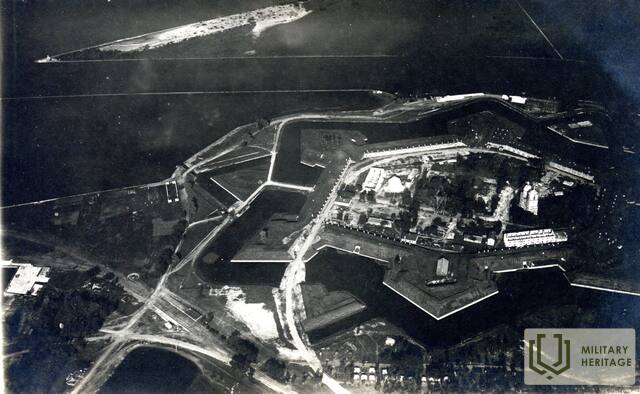

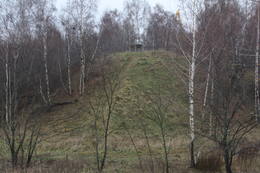
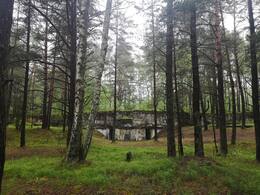
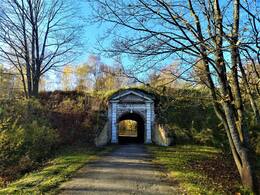
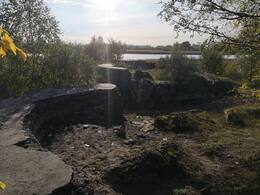
About the comet fort. In 1765, the Swedish government could not give the task of building a fort, since this territory was part of the Russian Empire from 1721.